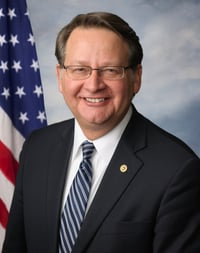 After calling for the U.S. Air Force to take action on PFAS contamination at the former Wurtsmith Air Force Base in Oscoda, U.S. Senator Gary Peters (MI) released the following statement on new developments announced this week.
After calling for the U.S. Air Force to take action on PFAS contamination at the former Wurtsmith Air Force Base in Oscoda, U.S. Senator Gary Peters (MI) released the following statement on new developments announced this week.
The Michigan Department of Environment, Great Lakes, and Energy (EGLE) and the US Air Force (USAF) said that the Air Force will accelerate its efforts to address PFAS contamination at the former Wurtsmith Air Force Base in Oscoda:
WASHINGTON, DC – “I’m encouraged that the Air Force has agreed to take additional steps and cooperate with the State of Michigan, and I’ll continue pressing for action – because the PFAS crisis in Michigan has impacted the lives of too many families.
Background on previous Oscoda efforts and NDAA PFAS provisions that passed the Senate last week:
In April, Peters hosted Air Force Assistant Secretary John Henderson in Oscoda and pressed the Air Force to do more to cleanup PFAS contamination in areas surrounding the former Wurtsmith Air Force Base. The visit came at the request of Peters who had called on the Air Force to work with the state of Michigan on clean-up efforts. Prior to the Oscoda visit, Peters had previously met with Assistant Secretary Henderson, who made assurances that the Air Force would take steps to clean up the contaminated areas in Oscoda in accordance with federal law. The Air Force had previously cited sovereign immunity from state environmental quality regulations and water resources protection laws. Peters reminded then-Air Force Secretary Heather Wilson that Congress has waived sovereign immunity for environmental cleanup purposes, and stated that the Air Force’s refusal to comply with state established water quality limits suggested that Congress should act swiftly to direct the Environmental Protection Agency (EPA) to establish enforceable federal standards.“I invited Secretary Henderson to Oscoda because residents deserved to know how the Air Force was going to assist with remediation efforts in the community. One of the biggest takeaways from that meeting in April is that the Air Force must do more to address PFAS contamination that has devastated the area.
As part of the National Defense Authorization Act, Peters, a member of the Senate Armed Services Committee, secured provisions to help address PFAS that passed the Senate last week. Included were provisions to encourage the Department of Defense to finalize cooperative agreements with states and partner with governors to address, test, monitor, remove, or remediate PFAS contamination originating from DoD activities, including at decommissioned military installations and National Guard facilities. If a cooperative agreement is not reached within one year of the request from a state, the Secretary of Defense must report to Congress explaining why. This measure is similar to bipartisan legislation that Peters introduced in May with Senator Debbie Stabenow and other colleagues.
The Senate-passed NDAA also includes a provision to authorize $2 million for advance computer modeling to improve the understanding of PFAS. This is similar to bipartisan legislation Peters authored and introduced recently. The bill also prevents the Department of Defense from buying firefighting foam that contains PFAS after October 1, 2022. This builds on Peters’ work in last year’s annual defense bill that is now law, which urged DoD to develop fluorine-free firefighting foams.
Also included in the legislation is an amendment Peters supported that:
- Requires the EPA to issue drinking water standards for PFOA and PFOS within two years;
- Provides the US Geological Survey with more resources to develop new advanced technologies to detect PFAS and conduct nationwide sampling for PFAS in the environment—based on the bipartisan PFAS Detection Act that Peters introduced with Stabenow earlier this year; and
- Adding PFAS to the EPA’s Toxic Release Inventory, affording better transparency on when and where PFAS chemicals are created, used and disposed of.












